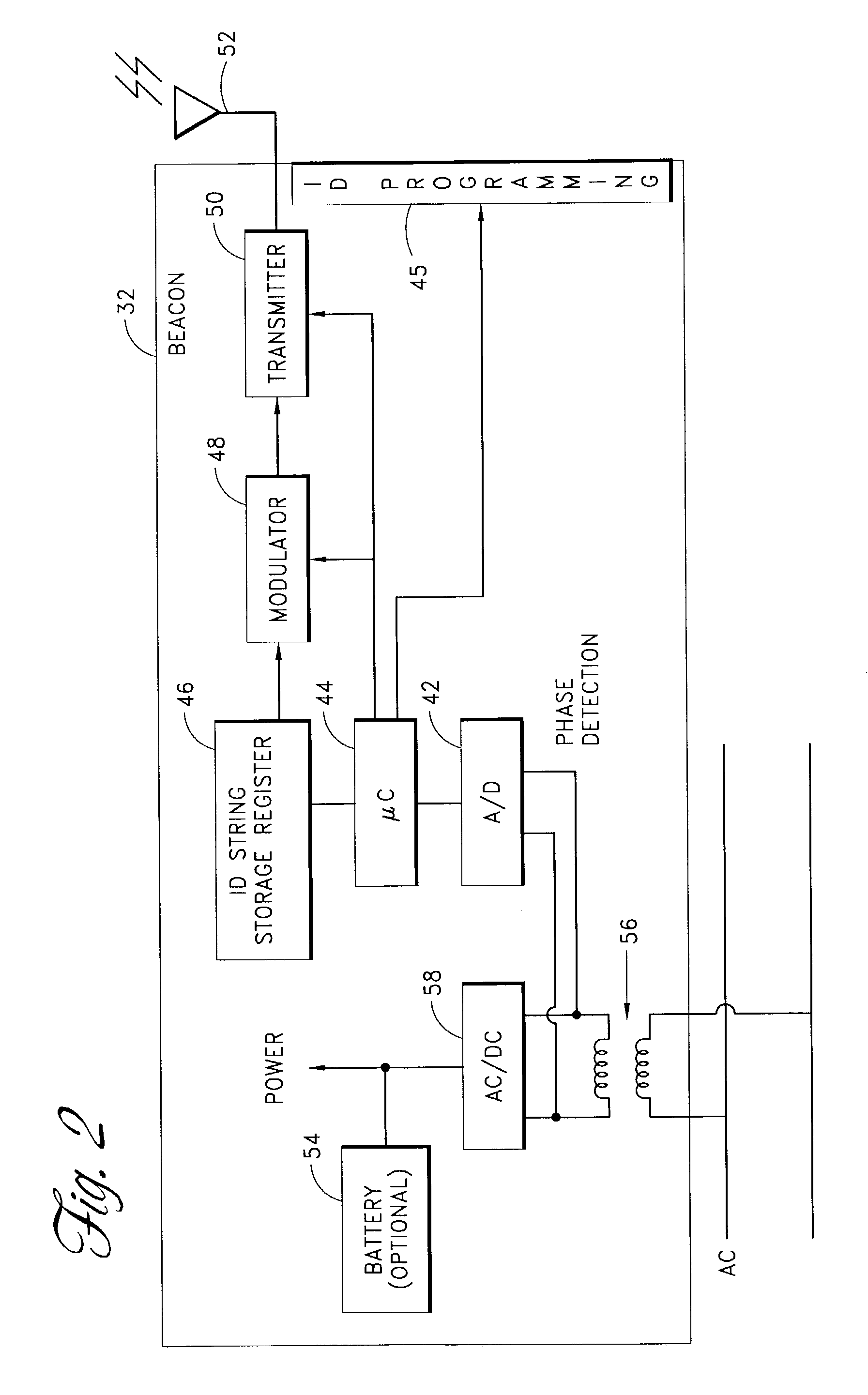Object location monitoring within buildings
a technology for object location and monitoring, applied in the direction of instruments, navigation instruments, electric signalling details, etc., can solve the problems of high degree of synchronization between the receivers, system implementation is difficult and expensive, and the location monitoring is not well suited to the object, so as to reduce the ambiguity and the effect of signal blockag
- Summary
- Abstract
- Description
- Claims
- Application Information
AI Technical Summary
Benefits of technology
Problems solved by technology
Method used
Image
Examples
Embodiment Construction
[0022]The structure and operation of a system in accordance with the present invention are illustrated below. In the particular embodiment illustrated, the preexisting infrastructure of a medical telemetry system (remote patient transceivers, access points, LAN, etc.) are used to monitor locations of patients within a medical facility. As will be apparent, the invention may also be implemented using other types of preexisting infrastructure, such as the general-purpose wireless LAN infrastructure of a building (e.g., to track laptop computers and other wireless computing devices). In addition, the invention may be implemented using special purpose transceivers and other components designed specifically for object location monitoring. Thus, the description of this particular embodiment is intended to illustrate, and not limit, the scope of the present invention.
[0023]FIG. 1 illustrates the components of a medical telemetry system that embodies the present invention. The medical telem...
PUM
 Login to View More
Login to View More Abstract
Description
Claims
Application Information
 Login to View More
Login to View More - R&D
- Intellectual Property
- Life Sciences
- Materials
- Tech Scout
- Unparalleled Data Quality
- Higher Quality Content
- 60% Fewer Hallucinations
Browse by: Latest US Patents, China's latest patents, Technical Efficacy Thesaurus, Application Domain, Technology Topic, Popular Technical Reports.
© 2025 PatSnap. All rights reserved.Legal|Privacy policy|Modern Slavery Act Transparency Statement|Sitemap|About US| Contact US: help@patsnap.com



